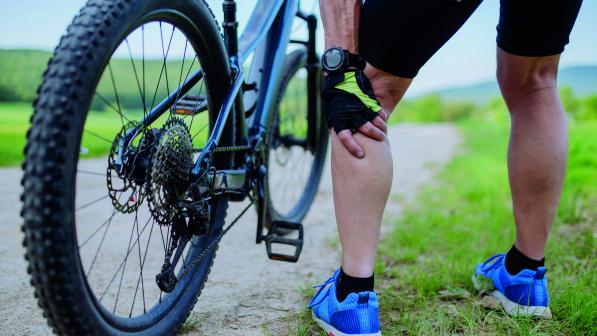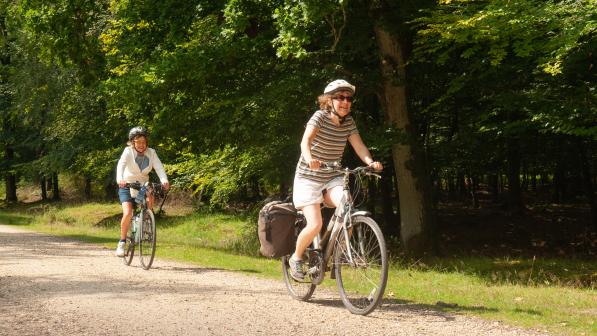Cycling or the gym: which is better?
I don’t buy into the ‘new year, new you’ thing. ‘You’ are fine just as you are. But there’s always room for improvement, and a goal to get a bit fitter is admirable, as well as one of the most common resolutions every year.
If you’re planning to get fitter and more active this year, you might be considering joining a gym. But is that really your best bet? Can I suggest the humble bicycle as an alternative? There are many benefits to getting out on bike rather than going to the gym.
Getting fit on a bike
First of all, can you get fit on a bike? The short answer is yes. Cycling is excellent cardiovascular exercise, meaning it’s great for the heart and lungs as well as general fitness and increasing stamina.
Cycling works many lower-body muscles, including the quads, hamstrings, glutes and calves. It’s also good for knee, ankle and hip flexor mobility. Cycling builds muscle endurance, too. This is especially true if you can increase resistance – add a couple of hills to your route or weigh your bike down with your work clothes.
Unlike indoor cycling on a stationary bike, riding outdoors requires staying upright and navigating over uneven ground, so you’re also working your core and upper body and improving your balance and coordination.

Cycling is also low impact so it’s suitable for anyone with joint problems. This isn’t the case with, say, running, which has the same aerobic benefits of cycling but is particularly hard on the knees.
It does depend somewhat on what your fitness goals are. If you want to build muscle mass, then cycling won’t serve you as well as the free weights and machines you’ll find in a gym. But for general fitness and being more active, cycling does it all.
Keep it up
It probably comes as no surprise that the majority of new gym membership sign-ups happen in January. However, most – 80% according to some research – of these January joiners will quit within five months, while about the same number of paying members simply don’t go. If all the people who paid for membership used it, the gyms wouldn’t cope – they’d be too packed.
There are many reasons people give up the gym, or never get started in the first place. Cycling can overcome lots of them.
The most commonly cited reason is cost. The average cost of gym membership in the UK is £44.92 per month. Over a year that adds up to £539.04. It doesn’t include the cost of petrol and wear and tear on your car if you drive there, which most people tend to do.
The cost of a new bike is £332 – a saving of more than £200. A secondhand one is even cheaper – in fact you can buy one for less than £100. And if you’ve already got one, well then it’s free. Unlike gym membership, which is an ongoing commitment, once you’ve got your bike, future costs are minimal. Especially if you can do some basic maintenance yourself.
Time is another issue. There’s a certain amount of irony in sitting in traffic to drive to a gym to sit on a stationary bike. Why not cut out the middleman and save some time in the process by getting out on a bike?

Unlike the gym, which has set opening times and class times and requires travel to get to and from, cycling can easily fit around your day. Workouts don’t have to be an hour to be effective. Ten-minute bursts which get the heart pumping work just as well, while just 20 minutes a day will almost get to you to the recommended minimum of 150 minutes per week.
Cycling to the shops or work is easy to do and it’s just a different way of travelling to where you wanted to get to anyway. If you live in town or city, it’s probably quicker than driving too. It’s exercise without even realising you’re exercising.
You might not be able to do a full week’s shop – although some people do – but the next time you need bread, milk and teabags, try swapping the car for a bike. Remember: the more you carry on the bike the better your workout!
Small changes like this add up and you’re much more likely to stick with it long term. You’ll soon see the benefits: more time, more money and more energy. You can then start to add in longer rides if you want to carry on increasing your fitness levels.
This last point also addresses another issue: boredom. Go to the gym, do the same circuit, staring at the same four walls, go home. It’s no wonder people lose motivation. Cycling means you can mix things up a bit.
Explore your local area by choosing different routes and enjoy a variety of scenery as you cycle. Check out new shops or close by cafés or use Google Maps to identify a spot you’ve never been before, then use Cycling UK’s journey planner to plan a route. You can try different types of cycling: off road, bikepacking or even BMXing.
Cycling is something you can do as part of a group or with family, providing that all important social element as well as accountability.
Access for all
Gyms can be intimidating places for newcomers, and women are more likely to experience ‘gymtimidation’ than men. There are many reasons for this.
If you’re not already fit, you might feel out of place; some people feel uncomfortable in gym kit. Women especially can feel like they’re being stared at. Then you have to figure out how to use all those different machines, often while someone glares at you for taking too long.
Gyms can be literally inaccessible for those with mobility issues, such as older people or wheelchair users. This isn’t to say that gyms aren’t doing what they can to be more accessible, but even so there is still the problem of not feeling like you fit the image of what a ‘real’ gym goer looks like.
Some of these fears can be addressed by having a gym induction or using a personal trainer. But not all, and the latter increases the already high costs.

There are cycles for almost everybody, whether that’s a trike, a handcycle, a recumbent or an e-bike. Non-adaptive bikes are also eminently customisable to cater to different needs, from hydraulic brakes for those with arthritis in their hands to just dropping the height of the saddle if you’re on the short side.
You don’t need to be head to toe in Lycra for cycling. Wear jeans to cycle to the shops or a local café. You can even wear a suit on your commute to work.
You’re in complete control with cycling. You decide when, where and how far to go. There’s no waiting around for machines to become free or other people waiting for the treadmill you just started running on. Your bike really doesn’t care how unfit you are.
You can cycle anywhere – even on holiday. Many places now have cycle hire schemes which is a great way to get to know a new locale while keeping fit. You can’t take a gym with you!
Environmental impacts
Gyms aren’t the most environmentally friendly places. It takes a huge amount of electricity and water – all those machines, lights, climate control and so on – to run a gym. Air conditioning units pump ozone-depleting gases into the air. That’s without factoring in the pollution caused by driving just to get there and back.
Bikes aren’t carbon neutral. Manufacture and delivery all have a carbon footprint. But cycling is one of the most environmentally friendly ways of travelling. There’s no engine to power and no fuel to burn. Or rather, the engine is you, the fuel is the food you eat.
It’s much better for the environment if we’re outside on a bike rather than in a gym using up precious resources. It’s better for you too. All exercise has mental health benefits, but being out in nature is particularly good for your wellbeing.
Being in green spaces boosts your mood and reduces feelings of stress and anxiety. Exercising outdoors leads to greater feelings of revitalisation, increased energy and positive engagement, as well as decreases in tension, confusion, anger and depression, when compared to exercising inside.
Even those of us living in cities will have access to some nature, even if it’s just a local park. A longer ride could easily take you out into the countryside. Where I live in north-east London, it’s not too much effort to get to the leafy environs of Epping Forest, for example.
Too often the gym feels like punishment – something you have to do so you can have fun elsewhere. Cycling, however, just fits into your life and it’s fun to do. Here at Cycling UK we think cycling beats the gym every time. But we could be biased …





